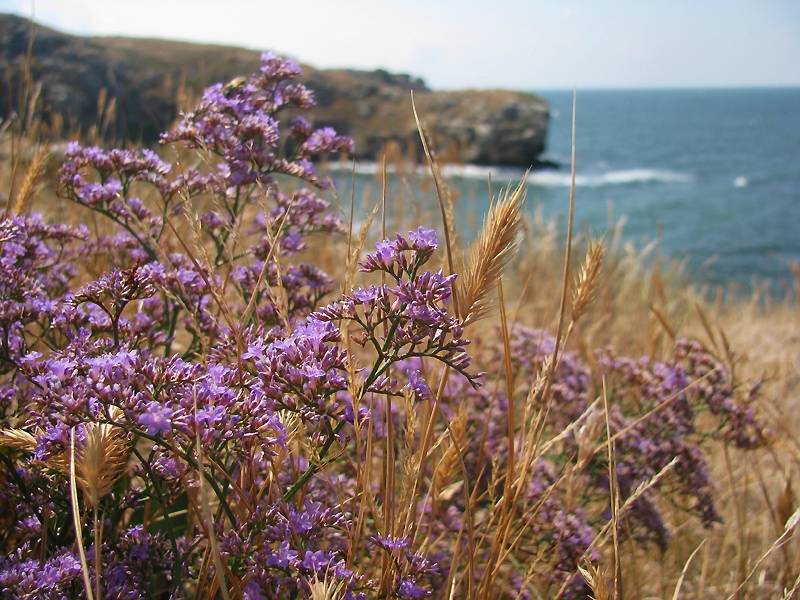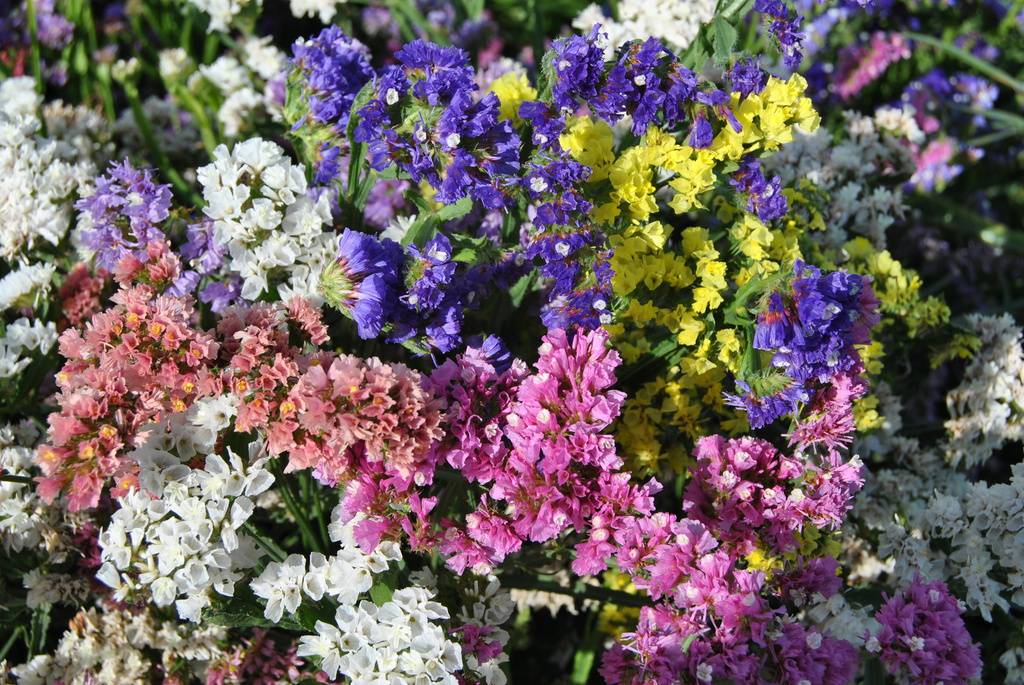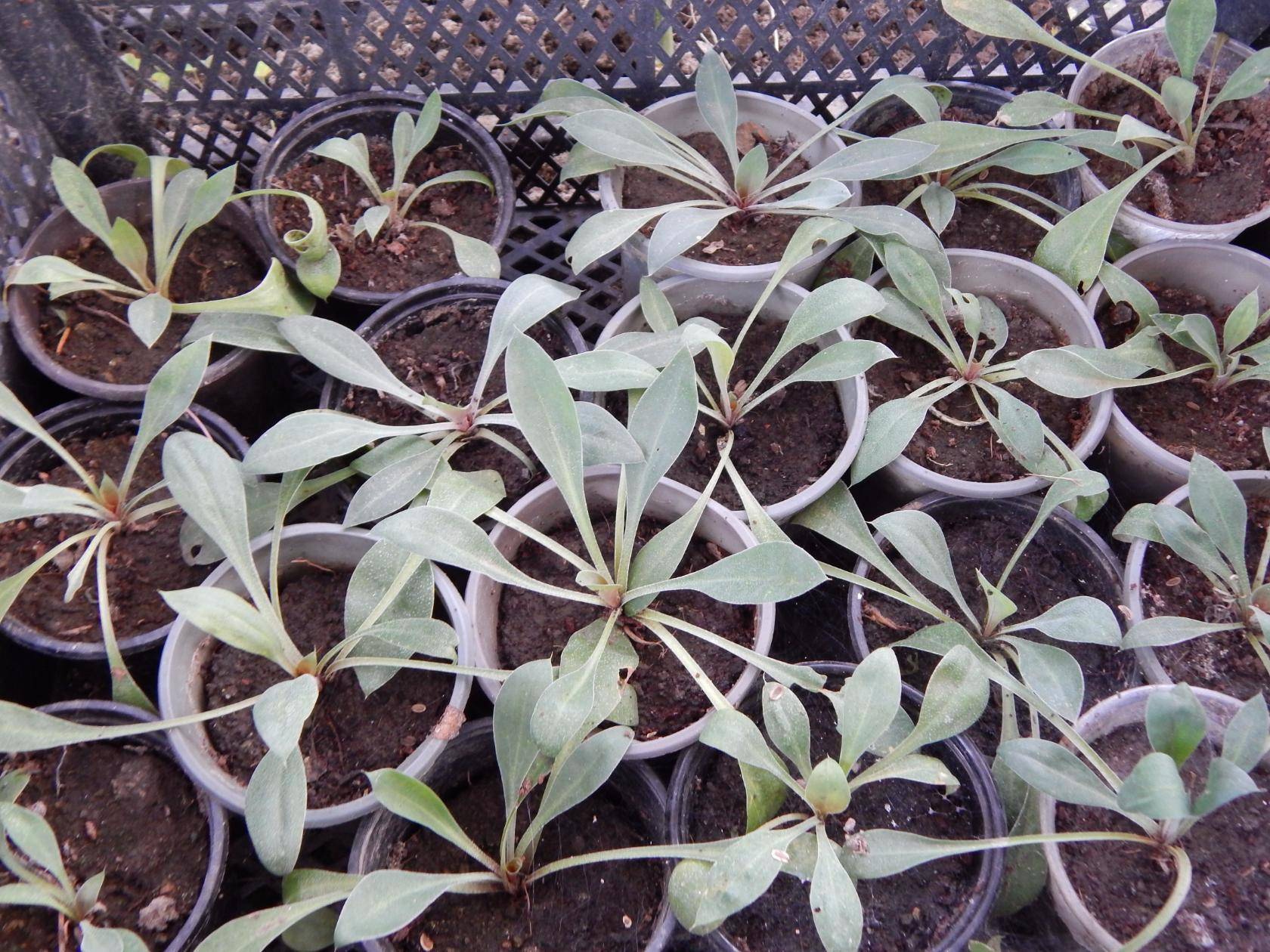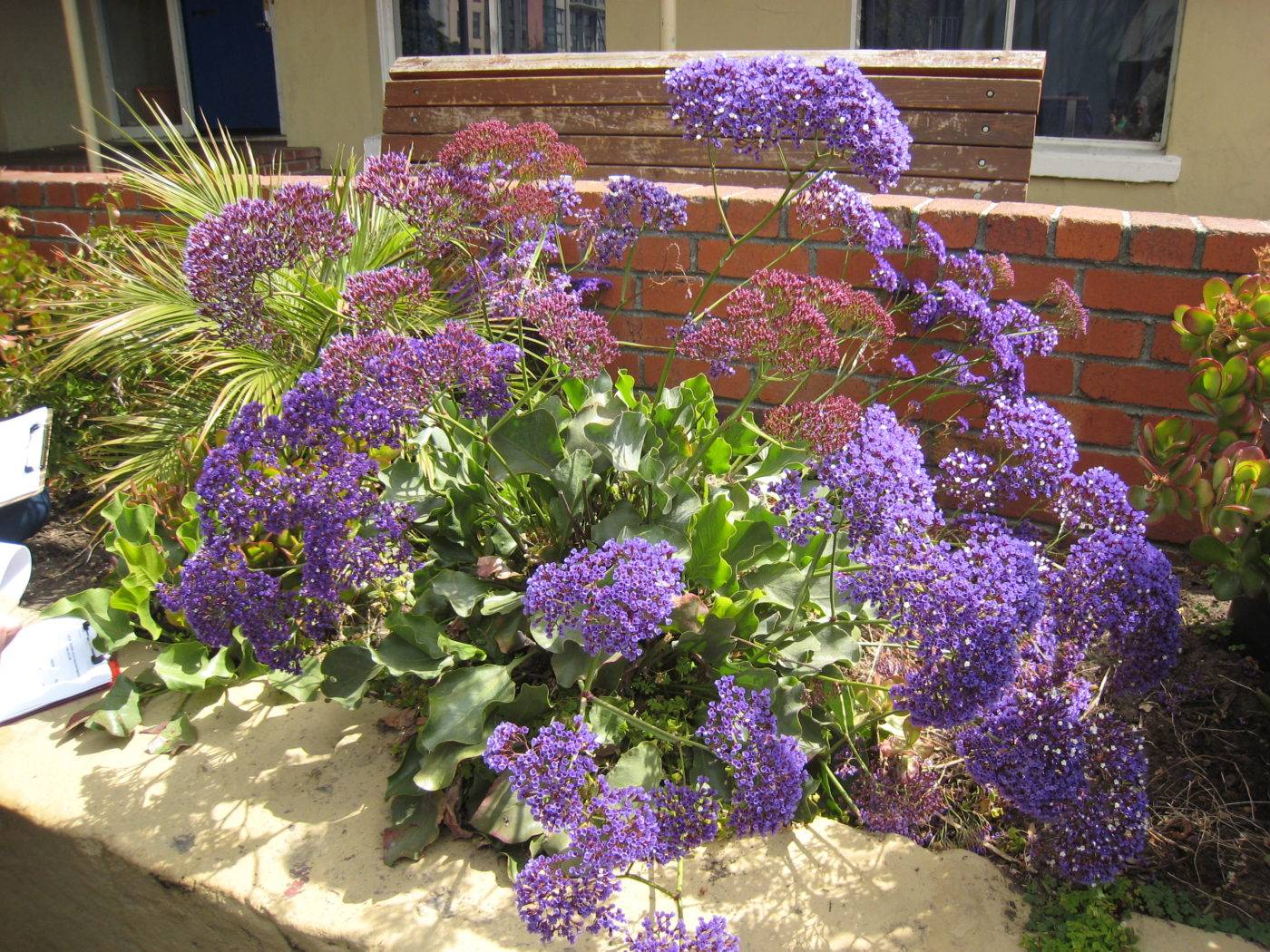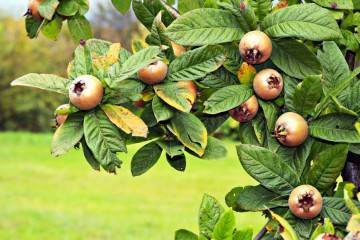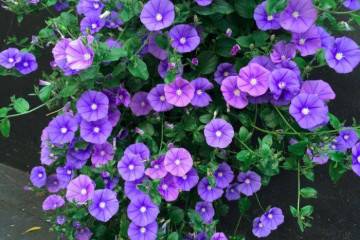Kermek Tatar (Statitsa) - growing a flower in the garden
Content:
Patterned umbrella inflorescences of this plant have found their application in floristry and landscape design. Having decided to grow a perennial Kermek Tatar on your personal plot, it will be useful to learn more about the shrub and get acquainted with the intricacies of its cultivation.
Features of Kermek Tatar
Kermek Tatar (aka limonium, statice, dried flowers, sea lavender and immortelle) is described as a herbaceous culture of the Pig family. Statice can be one-year, two-year, or perennial. The root system of the shrub is pivotal, capable of extracting moisture from the deep layers of the soil.
Kermek flowers are like bells, collected in inflorescences, shaped like a panicle or brush. The color of flowers in different varieties and wild species varies greatly: they can be white, yellow, pink, lilac, violet, blue, purple.
Kermek classification (statice)
The plant has several wild species. They all grow on different continents and in different climatic conditions.
Kermek broadleaf (Limonium latifolium)
Also called flat-leaved kermek. The natural habitat is the mountainous Caucasus. The height of the bushes does not exceed 50 cm. During the flowering stage they exude an unpleasant odor. On its basis, many cultivars have been bred, planted in flower beds.
Kermek Perez (Limonium perezii)
This statice is native to the Canary Islands. Plant height reaches 60 cm. Inflorescences have a rich purple color. Professional florists use this variety to make bouquets of dead wood and fresh flowers.
Kermek Bondwelli (Limonium bonduellii)
The homeland of this species is North Africa. A perennial can be called tall - its stems stretch up to 1 meter. Shoots are fragile, without comb-like outgrowths. Inflorescences are openwork, wide, consist of white or yellow flowers. Varietal varieties are not available, but Bondwell seeds are often added to flower mixes.
Chinese Kermek (Limonium sinensis)
Perennial leaves are distinguished by a glossy shine, the stems are quite long (up to 70 cm). When this statice blooms, everything around looks like white and yellow clouds.
Kermek notched (Limonium sinuatum)
In regions with a temperate climate, it is also cultivated as an annual. Differs in long stems (up to 80 cm). Inflorescences are similar to double ears, their color may vary. On sale you can find monochromatic and colored mixtures of this lemongrass, which became the progenitor of most cultural species of statice.
Statica Suvorov (Limonium suworowii), or plantain flower (Psylliostachys suworowii)
A variety grown as an annual plant.The inflorescences are similar to the branched ears of plantain. They are painted in different shades of pink and lilac.
Statice Gmelin (Limonium gmelinii)
The shrub is widespread in Siberia, Mongolia, China, Central Asia, and central Europe. You can recognize this statice by the inflorescences in the form of dense brushes, painted in a deep purple color. Kermek Gmelin in temperate climates can be grown as a perennial, but you will have to cover it for the winter.
Varieties that are very popular with gardeners
Thanks to selection work on wild species of statice, many varieties of this plant have been bred. Some of them can be found in summer cottages and garden plots more often than others. It is recommended to purchase Dutch seed.
- Violetta is a medium-sized variety of broadleaf kermek. Differs in highly branching shoots. Inflorescences are painted in lavender color.
- Blue Cloud or Blue Cloud is another cultivated subspecies of broadleaf kermek. The bushes of this variety are quite tall, have spreading stems. The flowers have a lilac hue.
- Confetti. Statice variety, bred on the basis of Chinese Kermek. The height of the bush is small, about 0.5 m. Inflorescences are graceful, pale cream shade.
- Elegant. Another popular variety obtained from the selection of the Chinese Kermek. Plant height reaches 70 cm, flowers have a creamy white color.
- Kermek Krymskiy is a floral mixture of varieties of kermek champlevé. The height of the plants varies from 30 to 80 cm. By purchasing them, you can expect to get bushes with pink, blue, yellow or purple inflorescences.
- Mixed Highbrides. A mixture of medium-sized varieties of notched statice up to 45 cm high. The corollas of flowers in it are painted in various shades of purple, white, yellow, blue and pink.
- Supreme. A mixture of statice blue and pink. The bushes in it differ in average height - about 60 cm.
- Shamo. The mix consists of a series of notched kermek varieties reaching a height of 70 cm. This mixture includes plants with inflorescences of various shades of pink, from deep coral to soft salmon.
- Fortress. Another multi-colored mix with purple, yellow, white, blue and pink flowers. The height of the bushes in it is 70-80 cm.
- Compinidi. A harmonious series of varieties with inflorescences of blue, lilac, blue and pink shades. Bushes are compact, no more than 0.5 m in height.
- Petit Bouquet series. Mix of low-growing varieties no more than 30 cm in height. The inflorescences of plants in it are painted in white and all kinds of pastel colors: light blue, pale lilac, pale pink or milky cream.
- Blue River. The Blue River is a notched statice, whose flowers, as the name suggests, play with all shades of blue. This mixture of cultivated subspecies reaches a height of 50 cm.
- Epricot is a medium-sized variety up to 60 cm high. Its flowers have a delicate apricot color, for which the plant got its name.
- Lavendel. The bushes of this variety are quite high - up to 80 cm. The plant is covered with delicate lilac flowers.
- Iceberg. The length of the stems of the statice of this variety reaches 75 cm. The inflorescences are distinguished by the snow-white coloring of the petals.
- Nachtblau. A bushy variety of notched kermek. Its shoots stretch up to almost 1 meter in height. The flowers are deep blue in color.
- Rosenshimmer and Emarikan Beauty. Two rather similar varieties with shoots up to 60 cm long. The first is distinguished by the smoky-lilac color of the inflorescences, the flowers of the second have a bright pink color.
Growing features
Kermek is easy to grow in the garden due to its unpretentiousness. But some features of planting statice in the open field and caring for it matter.
Soil preparation and landing sites
Statice should choose an area open to sunlight throughout the day, as it naturally grows in arid areas. The soil for the plant requires light, with a high content of sand. When preparing a place for planting, the earth is well dug up, drained and alkalized with bone meal.
The nuances of growing seedlings
Seeds are planted in small containers in March-April.
The seedlings are planted in a permanent place when the threat of frost has passed, placing the bushes at a distance of 30-50 cm from each other. Each seedling is added dropwise using the transshipment method so as not to damage the root.
Sowing seeds in the garden
In warm regions, you can try sowing seeds directly into open ground. This should be done when the soil warms up well enough.
Flower care
Caring for the kermek bushes is required very minimal. If you choose the right site for the statice and cope with the difficulties in germinating seedlings, then there will be no further problems with the plant.
Top dressing of bushes
Usually, fertilizing lemongrass is not needed, but if the soil on the site is too poor, then sometimes it will have to be fertilized. After transferring the seedlings to the ground, they can be fed with a mineral complex. Re-fertilization is possible no earlier than after 4 weeks.
List of summer treatments
It is necessary to water the plant only when the stems and leaves begin to lose their elasticity, which happens only during a prolonged drought. In a rainy summer, watering can be excluded, sometimes loosening the soil under the bushes.
Kermek after flowering
Statice seeds ripen very slowly. In order for them to be suitable for germination, all inflorescences must be removed from the plant except for the healthiest and strongest 3-4.
Seed collection
Seeds are collected in the fall, after flowering is complete. The inflorescences are cut and dried. Seeds are removed from dry capsules and used for sowing for 3-4 years.
Wintering
Perennial Kermek winters well without shelter, but it is better to protect the bushes from severe frosts. For this, the plants are sprinkled with dry leaves or covered with a non-woven cloth.
Why did not the seeds sprout
The germination rate of kermek seeds does not exceed 30%. This is due to the inability of the fruit to ripen in temperate climates. Seedling propagation of the plant is considered to be more effective.
Dangerous diseases and pests
Problems with growing statice flower arise when the conditions of detention are violated: waterlogging, shade, lack of winter shelter. Excessive watering leads to rotting, from which it will no longer be possible to save the plant. From insects, the grass kermek can harm aphids. You can get rid of it with the help of tobacco infusion or insecticides.
Multi-colored openwork inflorescences of the Tatar Kermek are able to decorate any personal plot. Its bushes grow where other plants do not take root: in open sunlight, on soils that are poor in composition.

